
Loose-fitting robes with waistbands start to appear in Longmen's Northern Wei grottoes and prevail in Tang-period ones.
The south cave was intended to honor Emperor Xuanwu's mother, but work was halted due to war.
Then in AD 641, Li Tai, fourth son of Li Shiming, Emperor Taizong (AD 599-649) of the Tang Dynasty, resumed work in the south cave to pray for blessings for his mother, and find favor while fighting his brothers to determine who would eventually succeed their father.
And it worked. Li Tai emerged victorious and Emperor Taizong came to visit the cave in person when work was completed.
Li Tai's success over his siblings is recorded in inscriptions carved on the cliff in between the south and middle caves.
Written by acclaimed Tang politician and calligrapher Chu Suiliang, it is widely admired by calligraphy lovers.
Today, the original is shielded behind a reproduction, protecting it from tourists, erosion and treasure hunters.
Sadly, some priceless inscriptions have been lost to calligraphy vandals.
Zhu pointed to the blank spaces between the lines on the reproduction. "These are missing words destroyed by collectors to ensure rubbings they took are unique."
Guyang Cave
Another favorite of calligraphy lovers in Longmen is Guyang Cave. The earliest cave in Longmen, Guyang houses more than 1,000 inscriptions that embody the essence of Weibei style - or Northern Wei monumental writing style.
Of the 20 finest Weibei-style inscriptions in Longmen, 19 adorn Guyang Cave.
Longmen can boast many unique attractions among its treasures. For while it seems that every grotto complex in China has a Wanfo Cave - Ten-Thousand Buddha Cave - Longmen has the only one designed by female officials.
These women held high status in court during the reign of Empress Wu Zetian (AD 690-705).
The cave features 150,000 small Buddha relief sculptures adorning two adjoining side walls. A sculpted blossoming lotus surrounded by eight flying deities adorns the cave ceiling, while a round-faced Buddha statue with a serene smile sits against a flame-patterned mural. Above the mural are carved 52 Bodhisattva statues, each sitting on a lotus. All are said to have individual gestures and facial expressions.
'Venus de Milo'
On the south wall outside the cave is Longmen's very own "Venus de Milo" - a partly-destroyed relief sculpture of Guan Yin, the Goddess of Mercy.
Her graceful, casual pose, carrying a narrow-mouthed vase in her left hand and swinging a horsehair ceremonial whisk over the right shoulder, has led to the statue being dubbed the most enchanting Buddha in Longmen.
"Some visitors joke that the Goddess of Mercy looks like she's just come off duty," Zhu said.
She added that the statue inspired Peking opera master Mei Lanfang to create his signature gait when performing renowned opera "The Drunken Beauty." This tells the story of Tang concubine Yang Yuhuan (AD 719-756), one of the four beauties of ancient China, who was said to look even more exquisite after she'd had a drink or two.
Part of Guan Yin's face has been hacked off by bandits, with only her full lips offering a tantalizing hint of how she would have looked. Trying to imagine her features and expression is a frustrating task, and I feel I'm no nearer to evoking her likeness.
"No matter what you think, it just seems not right," Zhu agreed with me. "It's like trying to imagine the arms of 'Venus de Milo.'"
Amidst all this beauty, regret kept haunting me while visiting Longmen Grottoes.
Carved out of limestone, Longmen is less vulnerable to the elements than other grottoes. But a number of sculptures and inscriptions were defaced and destroyed when Buddhism was persecuted during the Tang Dynasty and the so-called "cultural revolution" (1966-76).
Other factors have taken their toll too. Many Buddha heads and other works are hacked off and looted by bandits over the years.



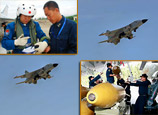
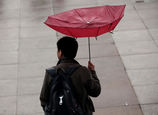
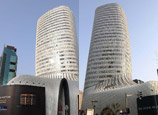
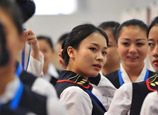

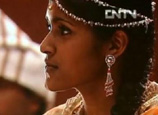

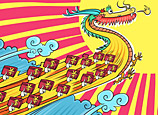
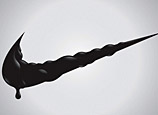






 Spring comes to China. More Spring Photos: 'Fresh style' ;'Spring Style'
Spring comes to China. More Spring Photos: 'Fresh style' ;'Spring Style'


![]()
